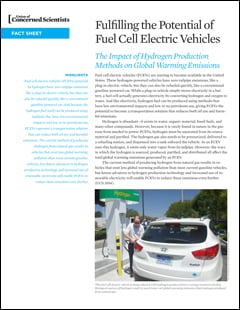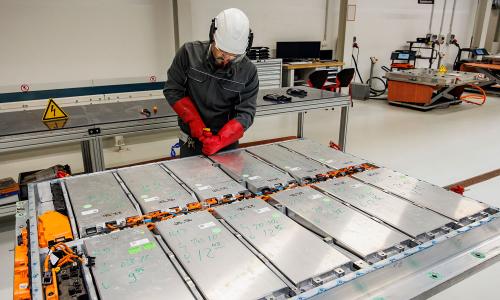Fuel cell vehicles generate electricity by converting hydrogen and oxygen into water and energy. This reaction produces no air pollution and no global warming pollution—only water leaves a fuel cell vehicle’s tailpipe—but the process used to make the hydrogen can generate carbon emissions.
Steam methane reforming, or SMR, is the most common method for producing hydrogen at large industrial scales. SMR causes the methane found in natural gas to react with steam, producing hydrogen and carbon monoxide. The carbon monoxide undergoes further reactions, generating more hydrogen and, crucially, carbon dioxide—a heat-trapping gas. Despite this, fuel cell vehicles driven on SMR-sourced hydrogen are still cleaner than their conventional counterparts, and produce even fewer emissions when the methane comes from waste, not natural gas.
Hydrogen can also come from water. Electrolysis is the process of splitting water into hydrogen and oxygen with electricity; when powered by renewable sources, this process produces very few emissions, but may not be feasible at larger scales. Photochemical production (using sunlight to drive electrolysis); thermochemical production (using high temperatures to split water apart); and biophotolysis (using algae to produce hydrogen from sunlight) are also options, with vary degrees of feasibility and expense.
Other sources of hydrogen include biomass gasification—where plant matter is heated and reacted to produce hydrogen and carbon dioxide—and fermentation, where certain types of bacteria generate hydrogen as part of their metabolism.
Most hydrogen produced today comes from SMR, generating some emissions—but because fuel cell vehicles are highly efficient, SMR-sourced hydrogen leads to fewer emissions overall than if the vehicles were gasoline or diesel-powered. Future advances in hydrogen production technology and increased use of renewable electricity will enable these vehicles to reduce their emissions even further.




